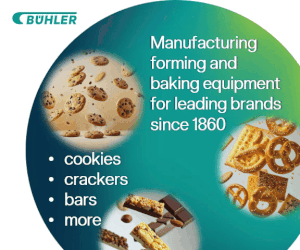KANSAS CITY, MO — When COVID-19 put the world on lockdown, panicked consumers stocked up on flour and yeast and started kneading. As a result, baking staples saw exponential growth, with sales of baking yeast up 457%, baking powder up 178% and flour up 155%, over the previous year ending March 28, 2019, according to Nielsen data. Print sales for bread cookbooks in the United States also grew 145% for the nine months ending September 2020. And according to Kristen McLean, NPD book industry analyst, the at-home bread baking movement could have staying power.
“Baking offered a comforting escape, and yeast suddenly became more difficult to find than toilet paper,” she said. “Sales of bread cookbooks are still well above 2019 levels, and given that the pandemic is still with us, the trend could be sticking around for a while.”
Even if the popularity of at-home baking bread continues in a post-COVID world, signs indicate the increased interest in the bread category — particularly artisan and craft-style — could provide opportunities on grocery store shelves as well.






